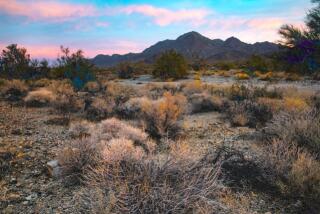Babbitt Seeks 4 New Western Monuments
- Share via
WASHINGTON — Interior Secretary Bruce Babbitt on Wednesday asked President Clinton to declare four new national monuments, including one at the Hanford Nuclear Reservation in Washington state that would protect 200,000 acres.
The other three would protect nearly 351,000 acres of federal land in Oregon, Colorado and Arizona. If Clinton approves the request, as expected, he will have used the Antiquities Act to protect nearly 3.7 million acres, the second most by a U.S. president.
“These are priceless natural landscapes that have somehow remained almost untouched by exploitation, development and urban sprawl,” Babbitt said in a statement.
Clinton said he will carefully consider the requests. “Each of the areas recommended today represents an exceptional, irreplaceable piece of America’s natural and cultural heritage,” he said in a statement.
But Western lawmakers were upset, saying Clinton should go through Congress if he wants to protect land.
“This is not what the Antiquities Act was intended for,” said Rep. Jim Kolbe (R-Ariz.). “It was not designed for the creation of another Yellowstone.”
The Hanford Reach National Monument would protect 51 miles of the Columbia River that is one of the largest undisturbed river stretches in the United States and a critical spawning ground for salmon.
The stretch has been left in pristine condition because it was part of a security buffer in the 560-square-mile reservation where the government made plutonium for the nation’s nuclear arsenal.
Other monuments requested include Canyons of the Ancients National Monument, 164,000 acres of Bureau of Land Management land in Colorado that contains more than 20,000 archeological sites; Ironwood Forest National Monument in Arizona, 134,750 acres of BLM land that includes stands of ironwood trees that can live more than 800 years; and Cascade-Siskiyou National Monument in Oregon, 52,000 acres of BLM land that is one of the most biologically diverse areas in North America.
More to Read
Sign up for Essential California
The most important California stories and recommendations in your inbox every morning.
You may occasionally receive promotional content from the Los Angeles Times.









